Looking for some best tablets for interior designers?
Look no further because I have covered everything in this article. In my search for the best tablet for interior design, I found some high-performance iPads and Android tablets.
As an Interior Designer myself I know that in interior design, functional and aesthetically pleasing interior solutions meet the needs of clients in a creative, technical field.
When you design an interior, it is a way of ensuring that people are able to pass through doorways without hitting each other or having their heads bumped off, while maintaining an aesthetically pleasing environment so that they can feel at home with whatever surrounds them each day.
In my opinion, inspiration for interior design can be found in every corner of the world. Any number of industries or fields in which creativity is needed can benefit from the use of a tablet. You can discover and innovate your way into the next big thing.

This is where tablets come in. They are the most perfect medium to represent your creativity to the world. So, talking about tablets, I must mention that performance is an important factor to consider when it comes to choosing the perfect tablet for interior design.
Using tablets for interior design is becoming a trend in recent years and it’s not only saying this. There are many pieces of research that prove the same phenomenon.
A quad-core processor will make sure that your apps start faster and perform better than those running on less powerful chips, like Atom or dual-core chips.
If it is not a major concern for you, I can recommend you go for at least 2GB of RAM. Although, my preference would be 4GB of RAM so that nothing slows down loading times in cases where intensive work needs to be done, such as graphic design software programs.
So here comes the question: How should interior designers choose their drawing tablet? Let’s find out.
But right before getting directly into the world of different tablets, it is important to mention some of the key features that you should keep in mind while purchasing the perfect Interior Design tablet for yourself.
Table of Contents
List of the Best Tablets for Designing Aesthetically Pleasing Interior Solutions:-
1. Apple iPad Pro M2
The Apple iPad Pro with an M2 chip is one of the best tablets for interior designers available on the market. This iPad is a 6th Generation tablet launched by Apple Inc., which is mostly known for its product worthiness. It came in two different color variants, i.e., Space Grey and Silver.
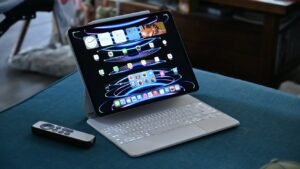
I could utilize my full potential in interior design projects thanks to its Truetone P3 12.9-inch screen that offered me clear and vibrant colors combined with retina display technology, which provides accurate color representation and the best viewing experience. As a student of interior design, I have always chosen a tablet with high quality and a large display size. This iPad Pro has a 12.9-inch Liquid Retina XDR display with some advanced display technologies like ProMotion, True Tone, and P3 wide color, which is really great for this price range.
This iPad Pro has an available storage option of up to 2 TB, which is awesome because most interior design apps require a large amount of storage for their installation. This iPad Pro comes with a 12 MP front camera and a 12 and 10 MP dual ultra-wide back camera with true-tone flash. It is great for taking 4K quality pictures and videos. This allows us to make and take good-quality pictures, videos, and video calls.
It is compatible with a 2nd Generation Apple Pencil, which gives us an immersive designing experience, and a Magic Keyboard, which features a great typing and working experience.
From my experience, I can say that this 6th Generation iPad Pro is a great tablet for interior design.
| Hardware Specifications of Apple iPad 12.9 Pro | |
| Processor | M2 Chip |
| RAM | 6 GB |
| Storage | 64 GB/1 TB |
| Display | 12.9″ Resulution with 2732 x 2048 – 264PPI |
| Camera | Rear- 12MP-10MP | Front- 7MP |
| Operating System | iPadOS |
| Battery Life | 10 hours |
| Weight | 1.41 lbs |
- Powerful Processor.
- Battery Life.
- High-quality performance.
- Stellar 5G performance.
- Limited software options.
- iPadOS makes multitasking difficult.
But, I recommend some other tablets that are good for video editing, which might help you in making better designs. You can check them out in our other article and also you can avail this course as well.
Fastest Way to Learn an iPad Workflow
Leaning towards the Apple iPad Pro? Consider also learning how to use one of the most popular iPad apps for interior designers, Procreate, in an online course made by interior designer, Henry Gao.
In his 3-part course, Henry shows you step-by-step the exact workflow he has taught to 1,000+ Interior designers and architects switching from analog to a digital workflow. Save time learning how to make the iPad work for your needs as an interior designer for a fraction of the iPad’s sticker price, and check out the course here.
2. Microsoft Surface Pro 7
Microsoft’s Surface Pro is a stylish device that you can use to conduct interior design coursework. This device has an innovative design with keyboard connectivity, making it easy for students of all skill set levels to get work done without hassle.
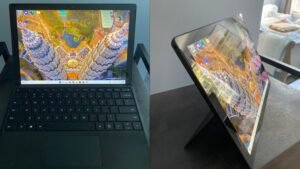
This tablet is the best Microsoft device for interior designers as in its core there is a 10th generation Core i5 processor coupled with 8GB of RAM. On the display side, the 12.3-inch screen with PixelSense technology enabled me to get my creative juices flowing.
While I was working on this tablet, I could use the kickstand to keep it stable and in place, which personally I feel, is a great feature. I could use the device to draw and design interiors on any surface, even the ground.
I just loved how the Surface Pen worked so smoothly with the tablet. It enabled me to draw just like on plain paper using the device. As an added bonus, I was also able to capture photos with an 8MP rear camera and a 5MP front-facing camera for selfies while working.
Thanks to its sensors, the tablet provided me with incredible 8-hour battery life on my daily usage. The device has also got USB type C and A ports, as well as an accelerometer and a gyroscope sensor for better navigation in games and through apps such as Google Maps.
| Hardware Specifications of Surface Pro 7 | |
| Processor | Intel Core i5 10th Gen |
| RAM | 8 GB |
| Storage | 128 GB |
| Display | 12.3″ Inch Retina display with 2736 x 1824 |
| Camera | Rear- 8MP |
| Operating System | Windows 11 |
| Battery Life | 10.5 hours |
| Weight | 1.7lbs |
- A keyboard is included in the package.
- All PC apps are supported.
- The display is bright and vivid.
- Batteries that last longer.
- Processor with high performance.
- The quality of the camera is poor.
- Very expensive.
Moreover, the small size of the interface makes it easy to plug your device into any computer, thus making it ideal for use at work.
So finally, it is about time that I give my final verdicts on the Microsoft Surface Pro 7. If you do not prefer Apple devices and do not want to get into the herd of Android tablets, this is the one that I recommend you to go for without any hesitation.
3. Samsung Galaxy Tab S6
Among the leading companies in the technology industry, Samsung is one of the most popular and the Galaxy Tab S6 is a very good offering from them.
I suggest you take a look at this tablet as it is an effective tool for interior designers and architects to use when they are looking for a powerful yet portable device they can use anywhere.
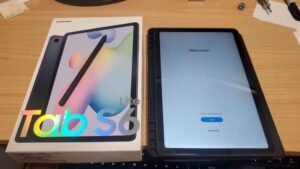
I could turn this tablet into a computer by connecting it to a wireless keyboard and S pen, enabling me to work on any artwork for hours without getting tired. I would like to state about its portability, thanks to its thin and lightweight design, I was able to carry it on my vacations and it felt easy and comfortable while holding it in my hands.
The 10.5-inch OLED screen provided my eyes with a visual freshness and helped me to watch my interior design projects in their true colors. The tablet can multitask without any problems thanks to its Qualcomm Snapdragon processor. Launching applications quickly is much easier since there are no delays like on most other tablets.
A 128 GB internal storage capacity complements 6GB of RAM on this tablet, which is Chromecast compatible. However, if you wish to get the most out of your device and increase your productivity, adding another MicroSD card can definitely help.
I was able to use this tablet with Nano sim cards, which enabled me to connect the tablet to the WiFi and data simultaneously. Also, it comes with an S pen designed to enhance the performance of this device when I planned on marking documents, jotting notes, or doodling.
| Hardware Specifications of Samsung Galaxy Tab S6 | |
| Processor | Octa-Core(2.8GHz+3×2.4, 4×1.7) |
| RAM | 6 GB |
| Storage | 128 GB |
| Display | 10.5″ Inch Retina display with 2560 x 1600 |
| Camera | Rear- 13MP | Front- 8MP |
| Operating System | Android |
| Battery Life | 15 hours |
| Weight | 0.92 lbs |
- Powerful Processor
- DeX mode
- Storage space
- Updated S pen stylus.
- Keyboard need to buy seperately
- Small keys
What better way than to capture images that are personal and unique to you with an 8MP camera, right?
Onboard sensors on this tablet include gyroscopes, a geomagnetic sensor, RGB light sensors, and a hall effect meter. These features combined into one device, made me feel like this was my best purchase ever.
The battery life on this tablet is around 15 hours which is exceptional in my opinion. The latter suggests that you will be able to work comfortably and without interruption during your task.
If you ask me, This tablet is a very good option for interior designers on a budget and it receives all the green flags from my side.
You can also check out its full review which was done by our experts in another article.
4. Google Pixel Slate 2 in 1 Tablet
I am pleased to introduce the Google Pixel Slate. The incredible power and portability of Chrome OS, combined with everything you love about Google for how you live and work, is now available on tablets.
![]()
Whether it’s instant pen input that detects pressure or smart multitasking through split-screen, nothing will keep you from accomplishing tomorrow’s big tasks. A well-known device for graphic designers is the Google Pixel Slate. A variety of slates are available, but this particular model has proven to be useful since its release last year as evidenced by its prolonged demand.
In addition to the Chromebook OS, the device has a fast-speed processor that made it easy for me to multi-task, launch apps quickly, and work on interior design tasks quickly. With the help of the S pen, I was able to express my creativity for convenience’s sake.
Tablets like this one are perfect for users with multiple interests. Pixel book pen support for a 12.3-inch touchscreen device with a Quad-Core Intel Core M processor, 4GB RAM to accommodate all the tasks that will be swarming over it at the same time, and an Intel Core M processor with I5 or I7 depending on your needs.
You can choose between 64GB and 256GB of storage for your interior design needs, along with variants that will meet your needs perfectly. This tablet comes with Wi-Fi, Bluetooth connectivity, and a camera that I used for work and play. There are also dual microphones, which enabled me to listen to music privately without being disturbed by background noise.
| Hardware Specifications of Google Pixel Slate (Chrome OS) | |
| Processor | 8th Gen Intel Core m3 processor |
| RAM | 8 GB |
| Storage | 64 GB |
| Display | 12.3″ Inch Retina display with 3000 x 2000 |
| Camera | Rear- 8MP | Front- 8MP |
| Operating System | Google Chrome OS |
| Battery Life | 10 hours |
| Weight | 1.6 lbs |
- Nice display
- Solid build
- Support mouse and keyboard
- Quite heavy
- Software lag
Despite not being aware of it, this tablet contains several sensors. Just to name them, magnetometers, ambient light sensors, and antenna proximity sensors are just a few examples of those features.
I used the Bluetooth keyboard shortcuts and USB-compatible wired keyboards, so it felt like home, and I had access to thousands of apps on the Play Store so one does have a lot of options. Basically, all this fun creative effort is aimed at one goal: maximizing your uptime.
Coming to my verdict, this is one of the most underrated tablets I have seen in a while. If you are a Google enthusiast and want a clean UI experience, this is the tablet I would suggest you go for.
5. Microsoft Surface Go
The Windows Surface Go is a portable and versatile device that features the smallest size yet has some serious power. On the move, it provides you with the fastest experience with its enhanced processors.
The sleek design makes this a great tablet to take with me when exploring or even working within buildings as an architect and interior designer. In my opinion, designers who are looking for a lightweight, yet powerful device should go with this tablet.

The Microsoft Surface Pro is a portable computer that is easy to carry around wherever you go. In addition to its dual-core Intel Pentium Gold processor, the device is equipped with a 10-inch tablet display that is enabled with Pixelsense technology for precision accuracy when I worked on projects or browsing the Internet.
You should take a breath of relief as this device is equipped with 64GB eMMC and 128GB SSD storage, which should provide more than enough space no matter what life might throw at you.
Designed specifically for high-quality designs and layouts, Intel HD 615 graphics delivered a satisfying performance. The Surface Go Signature Type Cover pairs with the Surface Go, which features a backlit key set, large trackpad, and S Pen so that you can capture your thoughts wherever you are, anytime.
With the Microsoft Surface Go mini tablet, I was able to access powerful features that simplified my life. Featuring a sleek design, long battery life, and a broad range of apps, it makes the perfect work companion.
If you are not convinced by this brief review, can you also check out our comprehensive review of Microsoft Surface Go.
Overall this is a tablet that I would recommend if you want a Windows OS but do not want to spend a lot money as you would do for the Surface Pro 7.
6. Samsung Electronics Galaxy Tab S7 FE
It is an excellent choice for interior designers to choose the Samsung Galaxy Tablet S7 FE. As one of the best tablets for drafting and drawing applications, it provides all the needed features without sacrificing power efficiency or performance like some newer models.
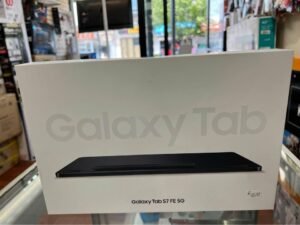
The high-quality display ensured that I was able to see details clearly regardless of where I was working. I also appreciate the fact that it can also be used on-site at night when visibility is low thanks to the discharge HLB lamp (which uses less energy than traditional light sources), or indoors during daylight hours without artificial lighting.
With the Samsung Galaxy Tab S7 FE, I was able to do anything. When I was provided with a big screen and more workspace, I had enough room to accomplish anything, including flying drones.
The Samsung Galaxy Tab S7 FE has a responsive design that feels as close to pen on paper as ever before, and the S Pen lets me sketch out an idea, doodle, or take notes with ease.
This tablet has all the features you need to have an amazing experience, including the ability to move and grow. With its large 12.4-inch display, the Samsung Galaxy S7 FE makes for a great study companion or entertainment device, especially with its brilliant color options that will make any content come alive.
The Galaxy Tab S7 FE unlocks greater productivity whether you’re working or playing. Utilize galaxy’s multi-device experience with dual monitors, or use a touch screen tablet, as I would.
Finally coming to the verdict, this tablet is well enough to satisfy your interior design needs and I can guarantee you that you won’t be disappointed to own it.
7. Apple iPad Air
Compared to all the budget iPads, the iPad Air outperforms them all. With the iPad mini, I got almost all the same features for a little bit less money, including support for the second-generation Apple Pencil.
The iPad Air is available in many different colors with 64GB or 256GB of storage, as well as silver, space gray, rose gold, and green. An A14 Bionic chip with 64-bit architecture and a neural engine populates the interior.
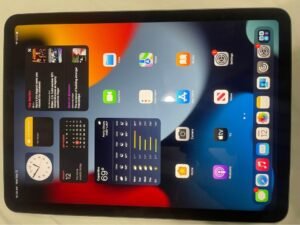
Together, they make the tablet among the fastest and most efficient ever made, and in my everyday usage, I never felt that the system was slowing down while working on my interior design work. It can also handle multiple tasks with extreme smoothness.
The tablet’s impressive display is the primary reason I consider it the best iPad for reading. The LED-backlit MultiTouch display measures 10.9 inches diagonally and features a 2360 x 1640 pixel resolution at 264 pixels per inch that provided me with a vivid experience.
In addition, the screen features a Wide Color display (P3) with True Tone, which made it easy for me to view no matter what time of day. The display is fully laminated with an anti-reflective coating, which ensured optimal protection for my eyes when I was working on it for hours. Even so, using it outside with bright sunlight is not made easier by the coating.
Also, the tablet has the first Apple tablet with a fingerprint identification sensor and Touch ID built into the top button which I feel is an impressive design change in the whole Apple lineup.
| Hardware Specifications of iPad Air 10.9 | |
| Processor | A14 Bionic |
| RAM | 4 GB |
| Storage | 64/256 GB |
| Display | 10.9″ Retina display with 2360 x 1640 |
| Camera | Rear- 12MP | Front- 7MP |
| Operating System | iPad OS 14 |
| Battery Life | 9 hours |
| Weight | 1.0 lbs |
- Elegant thin and light design.
- Bright, colorful and sharp display.
- Excellent webcam.
- Magic Keyboard.
- No face id.
- No headphone jack.
- Expensive accessories.
Moreover, the Magic Keyboard and Smart Keyboard Folio are supported. Last but not least, the tablet offers up to 10 hours of surfing the web or watching a video on Wi-Fi and up to 9 hours on a cellular data network which meant that I could work on it without getting interrupted to charge it.
In my opinion, this tablet is for those who want an Apple device but do not want to burn a hole in their pockets in the iPad Pro for their Interior Design needs.
What Features Should You Keep In Your Mind While Buying A Tablet For Interior Design?
1. Internal specifications and the processor
It is very important for a tablet to have the latest internal components and it is necessary to ensure that your tablet has a processor that can handle your tasks and a minimum of 2GB of RAM as well as the ability to run multiple applications at one time. For optimal performance, the tablet must be equipped with a quad-core processor clocked at 2000 MHz.
Take it as my advice, ideally, an interior designer’s tablet should be large enough for comfortable drawing, and power to run rendering software. Small details that can make a difference in your tablet-owning experience should be checked.
For example, a long battery life, portability of the tablet by checking its size and weight, as well as ensuring it makes sense for your lifestyle and workload.
I have used many tablets over the course of time and found that there are many tablets that work only over Wi-Fi, which is okay for in-office use, but if you need access to edit documents on the go, I would suggest you avoid a WiFi-only tablet.
It doesn’t matter whether you use the device for note-taking and brainstorming during meetings or doodling during the commute, specifications like an additional SD card, pressure sensitivity, screen size, and high resolution influence your final buying decision.
The decision-making process can be supported by aesthetic features, such as slim or sleek design, which I faced when I was planning to buy a tablet for my design work.
2. The Display Quality
When you are designing an interior, the next factor you should consider in the tablet is the display quality. By using a tablet with a large screen and a high-quality display, your designs remain consistent. It doesn’t matter where elements are placed or what aspect ratio is chosen for every device size setting, all elements are easily readable on the screen.
3. The Build Quality
I would suggest you buy a tablet that is lightweight to avoid any fatigue after working for hours. As well as enabling you to continue working while holding the device, it should be built strong enough so that in case it falls from your hands it survives the impact without getting any damage.
The color of the tablet might be another factor you might want to consider (I know that it is not all that important). In addition to brighter, more fun colors like pink, blue, and purple, you can also get many of these top tablets in more professional and subtle colors like space gray, silver, or black.
4. The Battery Life
Battery life is another distinguishing factor that differentiates between a cheaper tablet and a more expensive tablet that is worth the investment for interior designers.
Suppose your tablet lasts for only a few hours, and you are working on it while suddenly it shuts down because of a low battery then all of your work would be lost, your programs might get corrupted and that is well enough to send anyone in a frustrated mind.
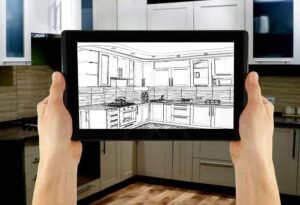
5. The Budget
I can totally understand that every individual has a unique financial situation, so interior designers who wish to purchase tablets may have different budgets. Getting an idea of how much you can afford to spend before you begin comparison shopping is the best approach if you ask me.
In the case of tablets, you typically get what you pay for, so spending more often makes it possible to get better craftsmanship and more appealing features. However, It is not an absolute necessity to buy a high-end tablet. It’s possible to find budget and midrange designs that work well despite missing a few bells and whistles.
I have researched and seen cheap Android tablets with an Android operating system going for less than one hundred dollars. On the other hand, these types of devices may not be the best for a long-term investment, in my opinion.
It is generally true that tablets that are very inexpensive don’t perform well for interior designers. Those who enjoy browsing the Internet and playing video games online will find these cheap tablets useful. Although these tables are not ideally suited for complex tasks so I would not recommend these to Interior Designers.
I suggest you really spend more if you are able to. Brands like Microsoft and Apple offer a variety of tablets that are more expensive but are also quite impressive in terms of features, display, and performance.
The iPad is actually the gold standard when it comes to tablets. Other models of cheaper tablets may use the same operating systems, but they perform very differently. Therefore, if you ask me I would recommend you an Apple iPad as it will feature superior ruggedness, display, storage, battery life, and memory than other competitors.
6. The Operating System
You will be able to choose from Android, iOS, and Windows operating systems on tablets, just as with smartphones. If you are looking for an operating system, you should take your preferences into consideration before you begin comparing options.
Tablets running Microsoft’s operating system have gained ground in the market recently after years of modest sales. Windows 10 has been an excellent operating system. Now it is time for you to make a decision.
There are advantages and disadvantages to each of the choices but in my opinion, it is more rational to choose either Android or iOS because you will have access to more applications and software. In terms of apps, Windows is far behind, but if you run Windows in your office, you might find it easier to integrate your workflow with a Windows tablet.
I have seen that Android devices tend to be cheaper than those powered by other operating systems and also there are a more significant number of options available. In terms of price, you may be able to get more tablets for your money when you choose an Android tablet.
The freedom to customize and tinker with Android is another advantage. I feel Apple’s systems tend to be more restricted.
Generally, as a rule of thumb, I would suggest you choose an operating system that you are already familiar with. It’s probably the most practical choice if you generally use an Apple, Windows, or Android product since you will know how to use it right from the start.
7. 4G Capability
WiFi is a must for any tablet that you purchase. Although it might be the case that some of them will not support 4G capability.
You should choose 4G if you can afford it, as you will be unable to perform certain tasks without it if you are out of the range of WiFi connectivity. One should choose a tablet that also has a good battery life, is rugged enough to withstand daily use, and has the right features.
Now, you have an idea of what to and what not to consider when purchasing a tablet for interior design. So without any further delays let’s look at the tablet options that are worth your attention and that will take your career to new heights.
Frequently Asked Questions:-
- What factors should I consider when choosing a tablet for interior design?
There are a variety of tablets for interior design available in the market, but to choose the right one for your needs, you should consider some factors they are display quality, software compatibility, stylus support, performance, storage, connectivity options, battery life, etc.
- Are there any specific tablets that are known for their performance in interior design tasks?
As per my knowledge, there are no specifically tailored tablets for interior design available in the market, but the Apple iPad Pro and the Microsoft Surface Pro series have been popular choices among designers because of their powerful processors, stylus support, and compatibility with design apps.
- Which tablets have a high-resolution display suitable for detailed design work?
There are lots of tablets available on the market with high-resolution displays for design work. The best ones are the Apple iPad Pro, Samsung Galaxy Tab S7+, and Microsoft Surface Pro.
- Do I need a specific operating system or platform compatibility for interior design apps and software?
Well, it is important to consider the operating system for interior design apps and software. For example, Apple’s iOS offers a range of design apps specifically optimized for iPads. On the other hand, Windows-based tablets, such as the Microsoft Surface lineup, are compatible with many design software programs like Adobe Creative Cloud, AutoCAD, and SketchUp.
- Are there any tablets that offer good color accuracy for an accurate representation of designs?
Yes, some tablets offer good color accuracy for an accurate representation of a design. The best ones are the Apple iPad Pro, Samsung Galaxy Tab S7+, and Wacom MobileStudio Pro.
- Can you recommend any budget-friendly tablets for interior designers?
Definitely, I can recommend you some budget-friendly tablets for interior designers they are the Samsung Galaxy Tab A series, the Lenovo Tab M10 FHD Plus, and the Amazon Fire HD 10.
Conclusion
Thank you for reading till the end. Hopefully, you now have a better idea about the best tablets for interior design. Furthermore, each of the included tablets has a unique signature that matches the professionalism you need.
Saying this with my experience, an interior designer’s requirements for tablets are very different from a regular user. In order to render a project and show the clients and customers your work, you will need graphical power, long battery life, and good display clarity.
It doesn’t matter whether you are a student of design or someone who does this professionally, which is why you must take your time choosing a tablet. Refrain yourself from rushing out and buying the cheapest device or even the most expensive device you can, since this can lead to a bad user experience.
I hope I have given you complete insights on how to choose the perfect tablet for interior design and other alternatives.
It is now up to your decision on which one you should go for. You hold greater importance than anyone else when it comes to the final verdict. So what are you waiting for? Go ahead and select your tablet.
Ben Scott is a prominent technology journalist and reviewer, specializing in tablet devices. He is known for his comprehensive and unbiased reviews of tablets from various manufacturers.
With a deep understanding of tablet technology, including hardware components, operating systems, and software applications, Scott provides clear and informative reviews accessible to readers of all levels of technical expertise.
His attention to detail and in-depth analysis have earned him a loyal following of readers.


